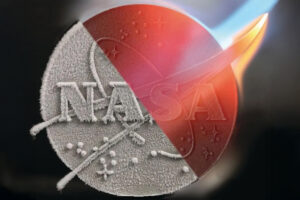NASA’s GRX-810 Alloy Pushes the Limits of 3D Printing

GRX-810 is a new metal alloy developed by NASA for 3D printing parts that can withstand the extreme temperatures of rocket engines, allowing affordable printing of high-heat parts (Photo: NASA)
August 15, 2025 – NASA’s Glenn Research Center has developed a groundbreaking metal alloy, GRX-810, that could transform aerospace manufacturing. Until now, 3D-printed engine components required costly alloys to survive extreme temperatures. GRX-810 offers a more affordable and durable solution.
Made primarily from nickel, cobalt, and chromium, the alloy is strengthened by a ceramic oxide layer applied through a unique resonant acoustic mixing process. This ensures every metal particle is evenly coated, dramatically improving heat resistance and mechanical performance. Remarkably, GRX-810 components can withstand 1050°C for up to a year—conditions that would destroy conventional alloys within hours.
Colorado-based Elementum 3D manufactures the alloy under a co-exclusive license and has already demonstrated excellent results in large-scale production. The material’s durability and versatility make it suitable for complex 3D-printed designs that traditional methods cannot achieve.
Industries are now testing GRX-810 in applications such as turbine flow sensors, where it could improve fuel efficiency, reduce emissions, and lower replacement costs.









